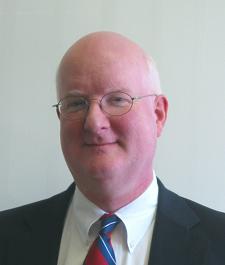| Is the God Beat Dead? |
![PDF-NOTE: Internet Explorer Users, right click the PDF Icon and choose [save target as] if you are experiencing problems with clicking.](http://rsnonline.org/templates/rsntemplate-smallmasthead/images/pdf_button.png) |
 |
Shaun Allen Casey, Wesley Theological Seminary
The AAR Public Understanding of Religion Committee convened a Special Topics Forum at the AAR’s Annual Meeting in Atlanta that explored the state of religion reporting. Committee member Shaun Allen Casey convened the panel, which consisted of Adelle Banks from Religion News Service, Sarah Posner of Religion Dispatches, Mark Silk of Trinity College, and Bob Smietana of the Tennessean newspaper. What follows is a summary of their remarks. Adelle Banks commented: The so-called ‘God beat’ most certainly is not dead but rather is being transformed by the Internet and the economy. Sarah Posner noted that religion stories that used to receive lengthy coverage in print media are now often going uncovered or are receiving marginal media attention. The pressing question is how is this void being filled currently? While there is still good coverage of religion, there is a lot of bad reporting as well. One area of particular concern is the lack of expertise by reporters in covering Islam. The Park 51 controversy in New York City from the summer of 2010 is a prime example of the failure of the press to grasp a story. The result was that ideological voices dominated the coverage. Religion Dispatches shows that a journalist can have a perspective and a view of a story. But reporters need to be able to assess the ideological dimensions of a story they are covering. Mark Silk noted that with the expansion of bloggers and tip sheets from insiders there is more information available today on religion. The old news adage of “call Martin Marty” no longer works. As the religion beat has opened to more players, partisanship has increased. Yet despite more information and more people commenting on religion on the Internet, the nuanced understanding of religion may have decreased. The downside is that religion reporters are spread very thin. Local coverage of religion has probably suffered as a result of newspaper cutbacks. Bob Smietana noted the shrinking number of religion reporters at newspapers nationwide. Too many good stories are going unreported. There is less in person reporting and much more work being done from the newsroom. Stories that take time to research and write are being squeezed by “now or never” stories that demand immediate attention and resources. Smietana was able to do a six-part story over five weeks on Islam in middle Tennessee, which ran counter to this pressure. He noted that he believed he was the luckiest reporter in America since he got to cover religion in Nashville. The consensus of the panel is that the “God beat” is far from dead, but it is suffering from the financial pressures in the news business and thus the nature of coverage is evolving. Solid reporting still exists, but the future is far from clear. As newspapers shed reporters of all kinds, religion coverage sometimes suffers disproportionately. There is a sense that with the emergence of alternative platforms on the Internet to traditional print coverage it is too early to tell just exactly where news reporting on religion is heading for the long term. |


 Shaun Allen Casey is professor of Christian ethics and director of the National Capital Semester for Seminarians (NCSS) at Wesley Theological Seminary in Washington, D.C. Casey served as senior advisor for religious affairs for the Obama campaign and was National Evangelical Coordinator in the 2008 presidential campaign. His research interests include ethics and international affairs, the public implications of religious belief, and the intersection of religion and politics. He has written on the ethics of the war in Iraq as well as the role of religion in American presidential politics. Casey’s book, The Making of a Catholic President: Kennedy vs. Nixon 1960, was published by Oxford University Press in January 2009. Casey is a graduate of Harvard Divinity School with a Master of Divinity Degree and a Doctorate of Theology in religion and society. He also earned a Master of Public Administration from the Kennedy School of Government at Harvard University with a concentration in international security. He also earned a Bachelor of Arts degree from Abilene Christian University. Casey is a member of the American Academy of Religion and serves on its Public Understanding of Religion Committee.
Shaun Allen Casey is professor of Christian ethics and director of the National Capital Semester for Seminarians (NCSS) at Wesley Theological Seminary in Washington, D.C. Casey served as senior advisor for religious affairs for the Obama campaign and was National Evangelical Coordinator in the 2008 presidential campaign. His research interests include ethics and international affairs, the public implications of religious belief, and the intersection of religion and politics. He has written on the ethics of the war in Iraq as well as the role of religion in American presidential politics. Casey’s book, The Making of a Catholic President: Kennedy vs. Nixon 1960, was published by Oxford University Press in January 2009. Casey is a graduate of Harvard Divinity School with a Master of Divinity Degree and a Doctorate of Theology in religion and society. He also earned a Master of Public Administration from the Kennedy School of Government at Harvard University with a concentration in international security. He also earned a Bachelor of Arts degree from Abilene Christian University. Casey is a member of the American Academy of Religion and serves on its Public Understanding of Religion Committee.